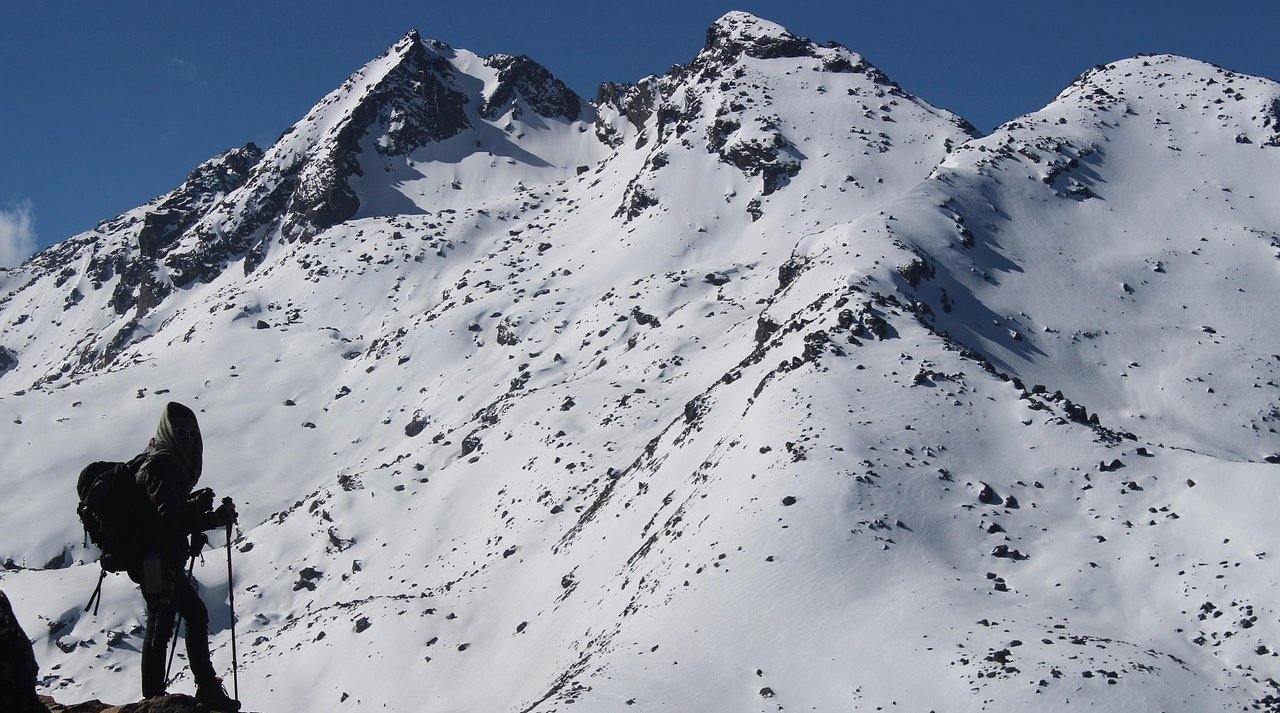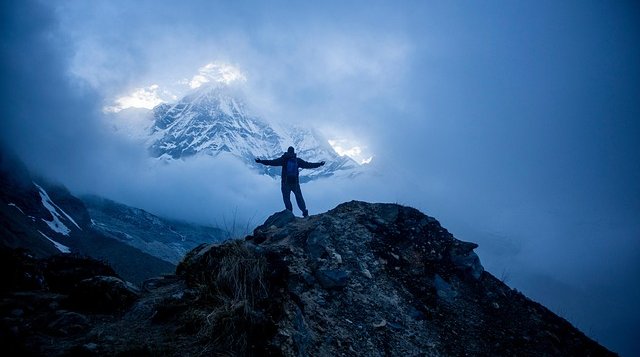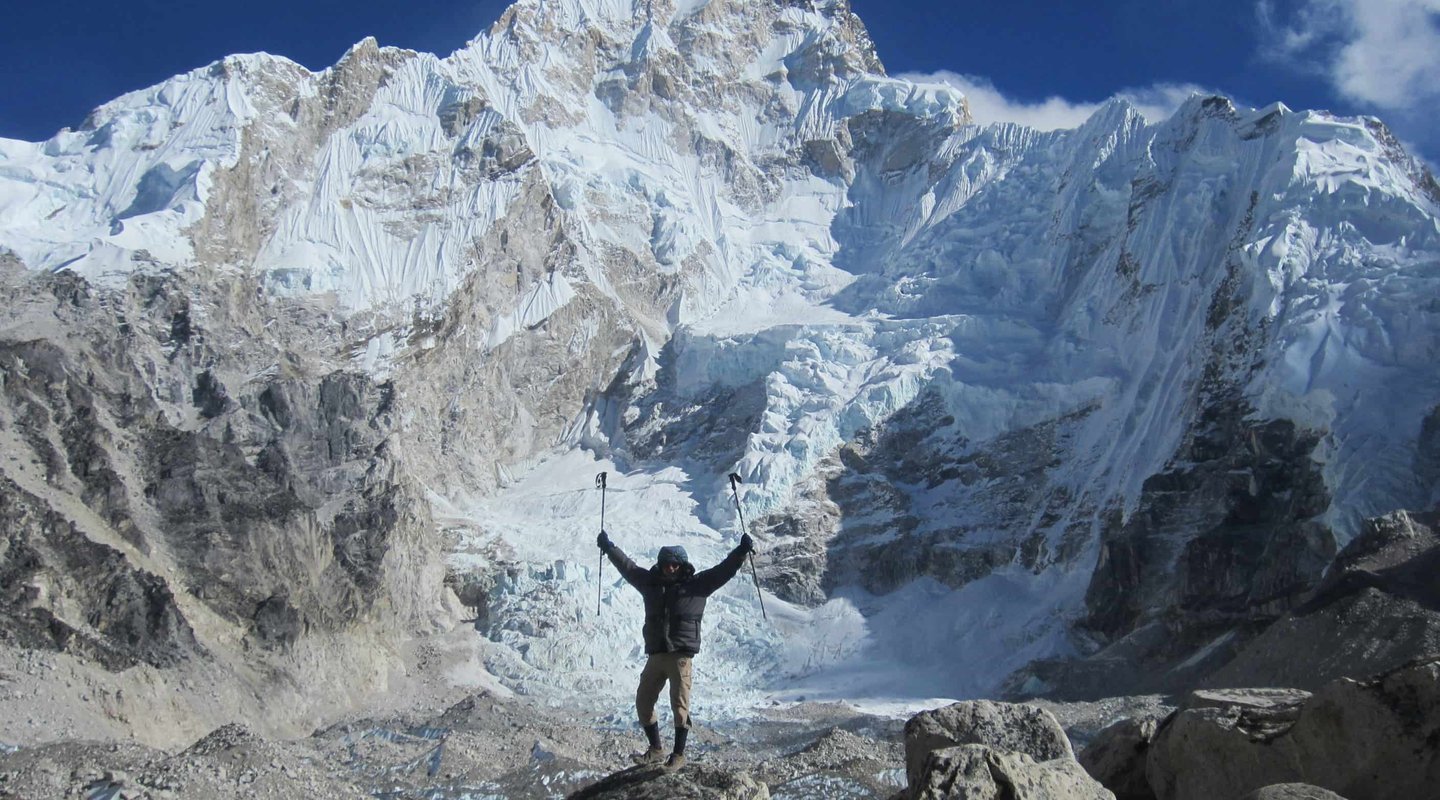Introduction
The Manaslu Circuit Trek has become a true classic offering the perfect combination of rich culture heritage, unsurpassed Himalayan beauty, and a rich mountain biological diversity as you ascend from the lowlands of the sub-tropics to the high mountains close to the Tibetan border. The trail follows the course of the world’s eighth-highest peak – Mount Manaslu (8,163m) – and offers a mesmerizing mix of beautiful scenery, authentic culture, and technically difficult terrain. But for solo travelers, the specific permit requirements and the hunt for trekking mates can be daunting.
This complete guide has all you need to know about hitting the Manaslu Circuit as a Solo trekker, including how to handle the compulsory 2ND person Goretex and SOS permits and ideas for sharing a permit. Whether you are a seasoned trekker or a novice Himalayan trekker, this guide will provide you with the wisdom to turn permit hurdles into opportunities for cultural exchange on this epic adventure.
Understanding the Manaslu Circuit Trek
Overview and History
The Manaslu Circuit Trek is a trail of approximately 177 kilometers going around Mount Manaslu in Nepal's Gorkha district. The region was closed to foreign trekkers until 1991 and therefore untouched by tourism for decades, preserving its pristine cultural heritage and virgin natural beauty.
Historically, the Manaslu region has been an important trade route between Nepal and Tibet, and this has accounted for the cultural diversity of the villages along the trekking trail. The "Manaslu" name itself comes from the Sanskrit word "Manasa," or "intellect" or "soul" because the mountain is revered by the people.
What Makes Manaslu Special
Unlike more commercialized trekking routes in Nepal, the Manaslu Circuit offers:
- Authentic cultural experiences: Trek through traditional villages where Tibetan Buddhist culture remains vibrant and largely unchanged by tourism
- Diverse ecosystems: Journey from subtropical forests at lower elevations to alpine meadows and glacial landscapes near Larkya La Pass
- Spectacular views: Enjoy panoramic vistas of Manaslu, Himlung Himal, Cheo Himal, and numerous other peaks
- Lower foot traffic: Experience significantly fewer crowds compared to the Annapurna or Everest regions
- Challenging passes: Conquer the formidable Larkya La Pass (5,160m), one of Nepal's most dramatic mountain passes
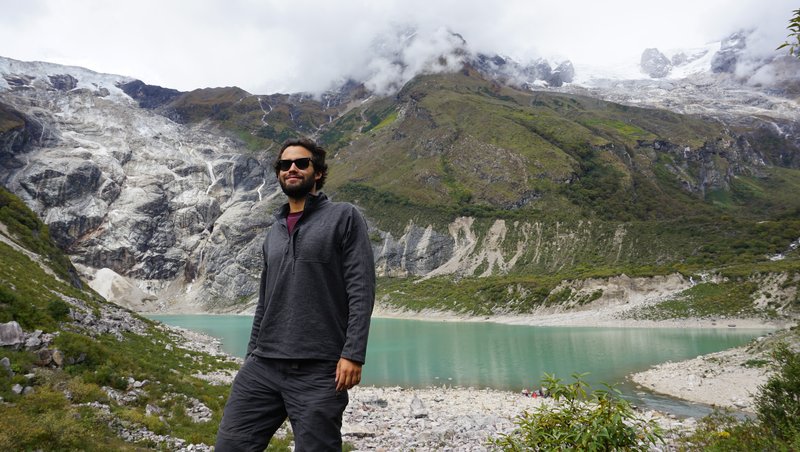
Best Time to Trek
The optimal seasons for the Manaslu Circuit Trek are:
Pre-monsoon (Spring: March to May)
- Moderate temperatures (10-15°C during daytime at mid-elevations)
- Vibrant rhododendron blooms create spectacular forest scenery
- Clear morning views with occasional afternoon clouds
- Busier than autumn but still manageable
Post-monsoon (Autumn: September to November)
- Most popular season with stable weather conditions
- Daytime temperatures between 10-12°C at mid-elevations
- Exceptional mountain visibility with crystal-clear skies
- Lively villages as locals celebrate post-harvest festivals
While technically possible, winter treks (December to February) present serious challenges with extreme cold and heavy snowfall at Larkya La Pass. Monsoon season (June to August) is generally not recommended due to slippery trails, leeches, and limited visibility.
Permit Requirements and Regulations
Understanding the Permit System
Trekking in the Manaslu region requires several permits:
- Manaslu Restricted Area Permit (MRAP)
- Cost: $100 USD per person for the first 7 days (Sept-Nov)
- Cost: $75 USD per person for the first 7 days (Dec-Aug)
- Additional days: $15 USD per day during peak season, $10 USD during off-season
- Critical requirement: Minimum group size of two trekkers with same itinerary
- Must be arranged through a registered Nepali trekking agency
- Annapurna Conservation Area Permit (ACAP)
- Cost: NPR 3,000 (approximately $25 USD)
- Required as the trek passes through portions of the Annapurna Conservation Area
- Manaslu Conservation Area Permit (MCAP)
- Cost: NPR 3,000 (approximately $25 USD)
- Funds conservation efforts throughout the Manaslu region
- TIMS Card (Trekkers' Information Management System)
- Cost: NPR 2,000 (approximately $17 USD) for individual trekkers
- Tracks trekker movements for safety purposes
The Group Trekking Requirement Explained
The most significant hurdle for solo travelers is the Manaslu Restricted Area Permit requirement: all trekkers must be in groups of at least two persons accompanied by a licensed guide. This regulation was implemented for multiple reasons:
- Safety concerns: The remote nature of the trek presents significant risks for solo trekkers
- Cultural preservation: Controlling tourism impact on local traditions and communities
- Economic benefits: Ensuring tourism revenue benefits local guides and porters
- Security monitoring: Easier tracking of foreigners in politically sensitive border regions
This regulation is strictly enforced at multiple checkpoints throughout the trek, particularly at Jagat (entry) and Dharapani (exit). Trekkers must present their permits along with identification at each checkpoint.
Permit Sharing Strategies for Solo Travelers
Finding Trekking Partners Before Departure
- Online Trekking Communities
- Facebook Groups: Join "Manaslu Circuit Trekkers," "Nepal Trekking Partners," or "Backpacking Nepal" groups
- Reddit: Post in r/Nepal, r/Trekking, or r/TravelPartners subreddits
- Trekking Forums: Create accounts on platforms like Lonely Planet's Thorn Tree or TripAdvisor's Nepal forums
- Trekking Agency Matching Services
- Many Kathmandu-based agencies maintain databases of solo trekkers seeking groups
- Reputable agencies offering this service include: Himalayanhero Adventures in thamel, Kathmadnu
- Usually requires booking your trek through their service (though this is often necessary anyway for permits)
- Hostel Networks in Kathmandu
- Popular backpacker hostels like Holiday Hostel, Zostel Kathmandu, and Monkey Temple Hostel have bulletin boards for trekking partner requests
- Attend hostel social events specifically designed for trekkers to meet potential partners
Last-Minute Partner Finding in Kathmandu
- Strategic Accommodation Choices
- Stay in Thamel, Kathmandu's tourist district where most trekkers gather
- Book hostels known for trekker communities like Alobar1000, Zostel, or Hotel Bright Star
- Many accommodations have WhatsApp groups or Facebook pages where you can post partner requests before arrival
- Pre-Trek Briefing Sessions
- Attend trekking agency briefings even if you haven't booked yet
- These sessions often include multiple solo trekkers planning similar itineraries
- Ask agency representatives to introduce you to other solo clients
- Thamel Café Scene
- Visit popular trekker hangouts like Himalayan Java Coffee, OR2K, or French Bakery
- Look for individuals studying trekking maps or guidebooks
- Be direct but respectful when approaching potential partners
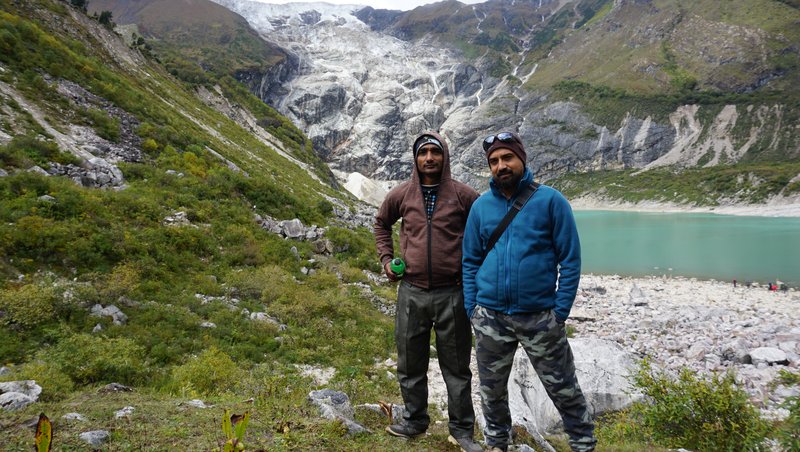
Working with Trekking Agencies for Partner Matching
Reputable agencies with strong track records for solo trekker matching include:
HimalayanHero Adventures
When approaching agencies, be clear about:
- Your exact trekking dates (with some flexibility if possible)
- Your trekking pace preference (slow, moderate, fast)
- Any specific route variations you're interested in
- Your experience level and physical condition
- Special interests (photography, birdwatching, cultural experiences)
Planning Your Manaslu Circuit Trek
Recommended Itinerary (14-16 Days)
Day 1: Kathmandu to Soti Khola (700m) - Drive (7-8 hours)
Day 2: Soti Khola to Machha Khola (930m) - Trek 6-7 hours
Day 3: Machha Khola to Jagat (1,340m) - Trek 6-7 hours
Day 4: Jagat to Deng (1,860m) - Trek 6-7 hours
Day 5: Deng to Namrung (2,630m) - Trek 6-7 hours
Day 6: Namrung to Samagaon (3,530m) - Trek 6-7 hours
Day 7: Acclimatization day in Samagaon - Optional hike to Pungen Monastery
Day 8: Samagaon to Samdo (3,860m) - Trek 4-5 hours
Day 9: Acclimatization day in Samdo - Optional hike toward Tibetan border
Day 10: Samdo to Dharamsala/Larkya Phedi (4,460m) - Trek 3-4 hours
Day 11: Dharamsala to Bimthang (3,720m) via Larkya La Pass (5,160m) - Trek 8-9 hours
Day 12: Bimthang to Tilije (2,300m) - Trek 5-6 hours
Day 13: Tilije to Dharapani (1,860m) - Trek 4-5 hours
Day 14: Dharapani to Besisahar, then drive to Kathmandu
This itinerary includes two critical acclimatization days to reduce altitude sickness risk, particularly important before tackling Larkya La Pass.
Packing Essentials
Trekking Gear:
- Sturdy hiking boots (broken in before the trek)
- Trekking poles (essential for the steep descent from Larkya La)
- Quality backpack (60-70 liters) with rain cover
- Day pack (20-30 liters) for carrying essentials while hiking
Clothing:
- Down jacket (essential for high altitudes and Larkya La crossing)
- Waterproof/windproof outer layers (jacket and pants)
- Moisture-wicking base layers (2-3 sets)
- Hiking pants (2 pairs, preferably quick-dry)
- Thermal underwear for higher elevations
- Quality hiking socks (4-5 pairs minimum)
- Gloves, warm hat, sun hat
- Buff or neck gaiter (multipurpose for sun/dust/cold protection)
Sleeping Gear:
- Sleeping bag rated to at least -10°C (lower rating for winter treks)
- Sleeping bag liner (adds warmth and hygiene)
- Travel pillow (optional but enhances sleep quality)
Other Essentials:
- Headlamp with extra batteries
- Water purification solution or filter
- Sunglasses (high UV protection)
- First aid kit including blister treatment
- Toiletries (biodegradable soap, quick-dry towel)
- Toilet paper (often unavailable in teahouses)
- Power bank and charging cables
- Trekking map (waterproofed)
Documents:
- Original passport
- Permit copies (physical and digital backups)
- Travel insurance documents (must include helicopter evacuation coverage)
- Emergency contact information
Physical Preparation
The Manaslu Circuit demands significant physical endurance. Begin preparation at least 3 months before your trek with:
Cardiovascular Conditioning:
- Regular hiking with elevation gain (ideally 2-3 times weekly)
- Stair climbing (excellent for building hiking-specific fitness)
- Running or cycling for baseline cardio endurance
Strength Training:
- Focus on lower body (squats, lunges, step-ups)
- Core strengthening exercises (planks, mountain climbers)
- Upper body work for carrying packs (push-ups, rows)
Altitude Preparation:
- No substitute exists for proper acclimatization
- Consider Diamox (acetazolamide) after consulting a travel doctor
- Practice deep breathing techniques to maximize oxygen efficiency
- Stay well-hydrated before and during the trek
Mental Preparation:
- Research accounts of the challenging Larkya La crossing
- Practice meditation or mindfulness to build mental resilience
- Visualize successfully completing difficult sections
Navigating Group Dynamics When Permit Sharing
Setting Expectations with Trekking Partners
Before committing to sharing permits and trekking together, establish clear agreements on:
- Daily Schedule
- Wake-up and departure times
- Preferred hiking pace
- Rest break frequency and duration
- Daily distance goals
- Accommodation Expectations
- Shared rooms or private when available
- Budget range for lodging
- Preferred teahouse amenities (attached bathrooms, charging facilities)
- Meal Arrangements
- Group dining vs. individual preference
- Dietary restrictions or preferences
- Approach to snacks and trail food sharing
- Financial Agreements
- Guide and porter cost sharing
- Permit cost splitting method
- Approach to shared expenses during the trek
- Contingency Plans
- Protocol if someone needs to turn back
- Approach to pace differences (stay together vs. meet at destination)
- Emergency communication and decision-making
Managing Potential Conflicts
Trekking with previously unknown partners can create interpersonal challenges. Prepare for:
- Pace Differences
- Agree on a "hiking together" vs. "meet at destination" approach
- Consider trekking in pairs if the group is larger
- Schedule regular meeting points if hiking separately
- Physical Capability Variations
- Be honest about your fitness level before starting
- Discuss how to handle if someone struggles with altitude
- Consider hiring an extra porter if someone needs to offload weight
- Decision-Making Process
- Establish how route decisions will be made (consensus vs. guide authority)
- Create a fair system for teahouse room selection
- Determine how to handle unexpected detours or schedule changes
- Financial Disputes
- Keep a shared expense log (apps like Splitwise work well)
- Clarify payment schedules for guides/porters
- Agree on tip amounts before the final day
- Privacy and Alone Time
- Respect needs for personal space
- Establish expectations about hiking together vs. separately
- Create signals for when someone needs quiet time
Building Positive Trekking Relationships
The quality of your trekking partners can greatly impact your Manaslu experience. Focus on:
- Pre-Trek Bonding
- Schedule a meal together in Kathmandu before departing
- Share previous trekking experiences and photos
- Discuss personal goals for the trek
- Cultural Sensitivity
- Discuss expectations regarding interactions with local communities
- Share knowledge about appropriate behaviors in Buddhist villages
- Agree on photography etiquette around people and religious sites
- Shared Responsibilities
- Rotate roles like timekeeper, water purification, or negotiations
- Share specialized equipment or skills
- Contribute equally to group morale
- Communication Protocols
- Exchange emergency contact information
- Share important medical information (allergies, conditions)
- Establish daily check-ins, especially in challenging sections
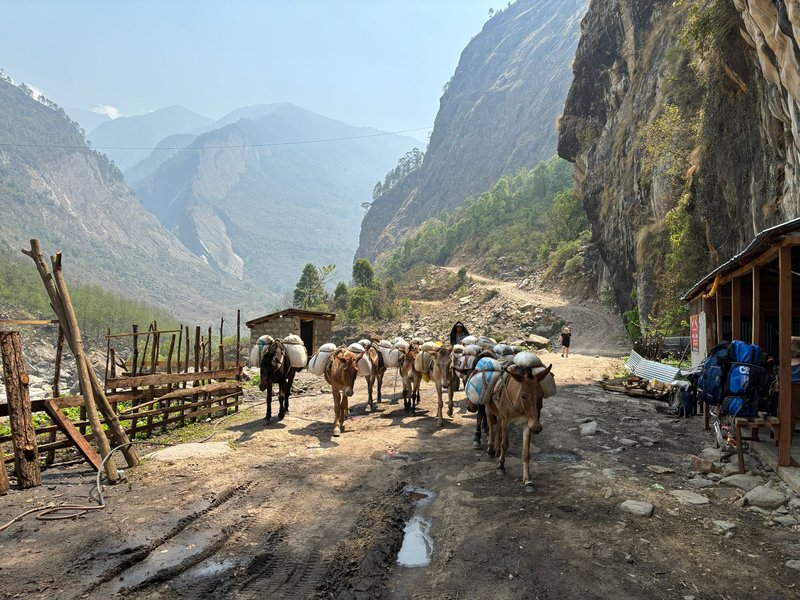
Cultural Insights and Etiquette
The Unique Cultural Landscape of Manaslu
The Manaslu region offers a fascinating cultural mosaic, transitioning from Hindu villages in the lower elevations to predominantly Tibetan Buddhist communities in the upper reaches. Key cultural features include:
- Religious Diversity
- Lower villages practice Hinduism with distinctive temples and practices
- Middle and upper regions follow Tibetan Buddhism with gompas (monasteries), mani walls, and prayer flags
- Syncretic religious practices blend Buddhist and pre-Buddhist Bon traditions
- Ethnic Communities
- Gurung people predominate in lower elevations
- Nubri and Tsum people (of Tibetan origin) in middle and upper regions
- Distinct cultural practices, architecture, and traditions in each zone
- Language Variations
- Nepali language common in lower regions
- Tibetan dialects prevail in higher villages
- Many younger residents speak some English due to tourism
Cultural Etiquette for Trekkers
Respecting local customs enhances both your experience and community relations:
- Religious Sites
- Walk clockwise around stupas, mani stones, and gompas
- Remove shoes before entering monasteries and temples
- Ask permission before photographing religious ceremonies or monks
- Maintain quiet, respectful demeanor in sacred spaces
- Village Protocols
- Greet locals with "Namaste" (folded hands) in lower regions
- Use "Tashi Delek" as greeting in Tibetan Buddhist areas
- Ask permission before photographing people, especially children
- Dress modestly, particularly in more traditional villages
- Dining Etiquette
- Wait for elders or guides to begin eating
- Use right hand for eating if dining without utensils
- Express gratitude for meals provided
- Follow local customs regarding kitchen access (often restricted)
- Sustainable Practices
- Carry all non-biodegradable waste out of the region
- Use biodegradable soap for washing
- Choose teahouses with sustainable practices
- Minimize use of plastic water bottles by using purification methods
Accommodation and Food on the Circuit
Teahouse Logistics
Teahouses (mountain lodges) are the primary accommodation along the Manaslu Circuit. Understanding their system is essential:
- Standard Facilities
- Basic rooms with twin beds (occasionally triple)
- Shared bathrooms (western toilets more common in lower regions)
- Common dining area typically heated by wood stove
- Increasingly available solar or hydropower electricity (limited hours)
- Seasonal Variations
- High season (October-November): Book rooms through guides/porters who walk ahead
- Low season: More availability but some teahouses may close
- Winter: Limited options with several teahouses closed
- Room Expectations
- Simple wooden or stone structures
- Thin mattresses with pillows (sleeping bag essential)
- Minimal or no heating in bedrooms
- Shared walls with limited soundproofing
- Bathroom Facilities
- Primarily shared bathrooms
- Mix of squat and western toilets depending on elevation
- Hot showers available at additional cost (solar-heated)
- More basic facilities at higher elevations
Food Considerations
The teahouse menu follows a fairly standard pattern throughout the circuit:
- Main Menu Offerings
- Dal Bhat (rice, lentil soup, vegetables): The staple trekking fuel with unlimited refills
- Noodle dishes (chow mein, thukpa)
- Potato dishes (fried, curry, pancakes)
- Simple pasta options
- Soups and momos (dumplings)
- Dietary Considerations
- Vegetarian options available everywhere
- Vegan options more limited but feasible (specify no butter/ghee/eggs)
- Gluten-free options challenging but possible (rice-based dishes)
- Limited fresh vegetables at higher elevations
- Nutrition Tips
- Protein sources become limited above 3,000m
- Carry protein supplements if needed
- Consume carbohydrates for energy
- Consider multivitamins for extended treks
- Hydration and Safe Drinking
- Boiled water available for purchase at all teahouses
- Treat all unboiled water (purification tablets, SteriPEN, or filter)
- Herbal teas widely available and beneficial for hydration
- Aim for 3-4 liters daily, especially at higher elevations
Safety and Emergency Considerations
Altitude Sickness Prevention and Management
Acute Mountain Sickness (AMS) represents the most significant health risk on the Manaslu Circuit:
- Prevention Strategies
- Follow the "climb high, sleep low" principle
- Stick to recommended acclimatization days
- Ascend no more than 500m sleeping altitude per day
- Maintain proper hydration (3-4 liters daily)
- Consider prophylactic medication (consult a travel doctor)
- Recognizing Symptoms
- Mild AMS: Headache, nausea, fatigue, loss of appetite
- Moderate AMS: Severe headache, vomiting, shortness of breath
- Severe AMS/HAPE/HACE: Confusion, fluid in lungs, severe shortness of breath
- Response Protocol
- Mild symptoms: Rest, hydrate, monitor, consider medication
- Worsening symptoms: Descend immediately, minimum 500m
- Severe symptoms: Emergency evacuation, administer oxygen if available
Communication and Emergency Resources
- Communication Options
- Cell coverage: Unreliable but improving (NCell better than NTC)
- Satellite communication: Consider renting satellite phones or Garmin InReach
- Teahouse phones: Available in some villages for emergency calls
- Medical Resources
- Health posts: Basic facilities in Philim and Samagaon
- First aid: Available at most larger teahouses
- Rescue: Helicopter evacuation possible in good weather (requires insurance)
- Insurance Requirements
- Minimum $100,000 USD coverage
- Must explicitly cover high-altitude trekking
- Must include helicopter evacuation
- Policy details and emergency contact numbers carried at all times
Common Non-Altitude Hazards
- Trail Hazards
- Landslide areas (particularly after monsoon season)
- Narrow trails with steep drop-offs
- Rock fall zones (stay alert to shouts from above)
- River crossings (use bridges when available)
- Wildlife Considerations
- Himalayan black bears (rare but present in lower forests)
- Proper food storage to avoid attracting wildlife
- Snow leopards extremely rare but present in upper regions
- Weather-Related Risks
- Sudden weather changes possible year-round
- Larkya La snowstorms even in peak season
- Hypothermia risk in wet conditions
- Lightning during pre-monsoon season
Budget Planning for Solo Travelers
Cost Breakdown
The Manaslu Circuit typically costs $1,500-2,500 USD for a 14-16 day trek:
- Fixed Costs
- Permits: Approximately $180 USD total per person
- Guide: $25-35 USD daily (can be shared among group)
- Porter: $20-25 USD daily (optional, can be shared)
- Transportation: $30-50 USD each way between Kathmandu and trailhead
- Daily Expenses
- Accommodation: $5-15 USD per night
- Meals: $15-25 USD per day
- Hot showers: $2-5 USD
- Device charging: $2-5 USD
- Wi-Fi (where available): $2-5 USD
- Additional Considerations
- Gear rental if needed: $5-15 USD per item
- Tips for guides/porters: 10-15% of service cost
- Buffer for unexpected expenses: $100-200 USD recommended
Money Management on the Trek
- Cash Requirements
- No ATMs on the circuit
- Carry all required Nepali rupees from Kathmandu
- Small denominations preferred
- Waterproof storage essential
- Payment Methods
- Cash only in most teahouses
- Some larger operations in Samagaon may accept cards (with surcharge)
- Prepayment possible for packages through agencies
- Cost-Saving Strategies
- Share guide costs with trekking partners
- Book full board packages for slight discounts
- Consider teahouse packages where room is free with meal purchase
- Carry some non-perishable food items for supplementation
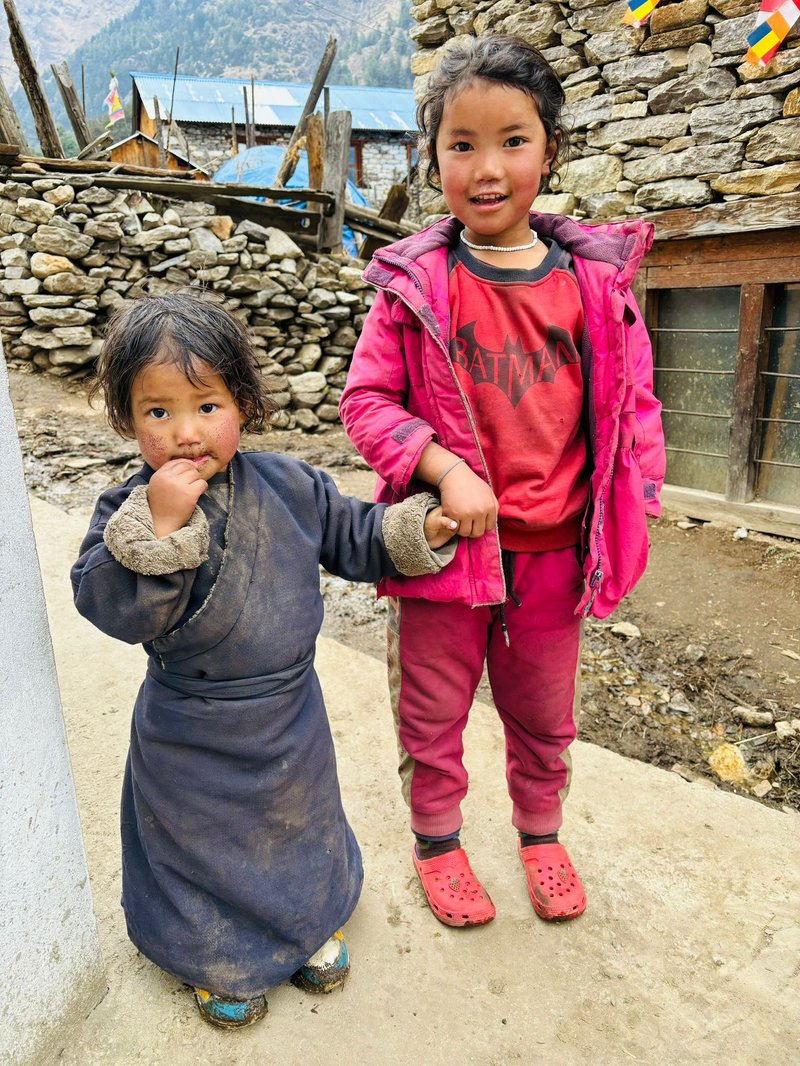
Making the Most of Your Manaslu Experience
Side Trips and Highlights
Several worthwhile detours enhance the main circuit:
- Tsum Valley
- 4-6 day side trip from the main circuit
- One of Nepal's most sacred hidden valleys
- Requires additional permit ($40 USD)
- Notable for unique Tibetan culture relatively untouched by tourism
- Pungen Monastery from Samagaon
- Half-day excursion
- Excellent acclimatization hike
- Spectacular views of Manaslu
- Ancient monastery with warm welcome from resident monks
- Manaslu Base Camp
- Full-day side trip from Samagaon
- Challenging but rewarding trek to 4,400m
- Outstanding glacier and mountain views
- Requires guide familiar with the route
- Tibetan Border Trek from Samdo
- Half-day acclimatization hike
- Views into Tibet
- Historical trade route markers
- Excellent preparation for Larkya La altitude
Photography Tips
The Manaslu Circuit offers extraordinary photography opportunities:
- Equipment Considerations
- Weather-sealed camera recommended
- Wide-angle lens for landscape shots
- Telephoto lens for distant mountain details
- Extra batteries (cold temperatures drain quickly)
- Lightweight tripod for low-light conditions
- Best Photography Locations
- Manaslu and surrounding peaks from Lho village
- Birendra Lake near Samagaon
- Prayer flags at Larkya La Pass
- Morning light on the mountains from Bimthang
- Cultural shots in traditional villages like Samdo
- Practical Advice
- Keep batteries warm by storing near body
- Use lens filters for glare reduction
- Request permission for portraits
- Morning light typically offers best mountain visibility
- Protect equipment from dust and moisture
Responsible Trekking Practices
- Environmental Considerations
- Pack out all non-biodegradable waste
- Use biodegradable soap and shampoo
- Stay on established trails to prevent erosion
- Use water purification rather than buying plastic bottles
- Minimize battery waste by using rechargeable options
- Cultural Respect
- Learn basic greetings in local languages
- Follow local customs regarding sacred sites
- Ask permission before photographing people
- Dress modestly, especially in traditional villages
- Support community-based tourism initiatives
- Economic Impact
- Purchase local products when available
- Support teahouses practicing sustainable operations
- Tip guides and porters appropriately
- Consider donations to local schools or health posts
- Hire local guides rather than bringing guides from Kathmandu
Conclusion
The Manaslu Circuit is one of the most rewarding treks in Nepal, with the perfect combination of challenge, cultural fascination, and natural beauty. While the permit system may initially seem to be an obstacle for independent trekkers, it tends to have the result of resulting in profound connections with fellow trekkers who contribute to the experience.
By understanding the permitting process, getting duly prepared, and pursuing finding partners in a reasonable manner, solo travelers can convert this bureaucratic obstacle into an opportunity for communal experience. The information and recollections earned by hiking through Larkya La Pass alongside new companions, sharing tales in teahouse restaurant rooms, and suffering the hardships of this stunning trek together can quite frequently be more rewarding than the awe-inspiring landscape itself.
Should Manaslu draw you in with its cultural richness, breathtaking mountain scenery, or the promise of a less crowded variant of Nepal's more famous treks, the loop rewards far beyond the early effort involved with permits. With prior planning and a willingness for communal shared experience, solo travelers can gain access to all of the wonders of this amazing trip while making connections that can extend far after the loop's final phases.
Safe travels and namaste!
Please feel free to contact us at [email protected] or WhatsApp us at +9779801127073.
Book yor seat now
complete-manaslu-circuit-trek-2025-route-difficulty-costs

